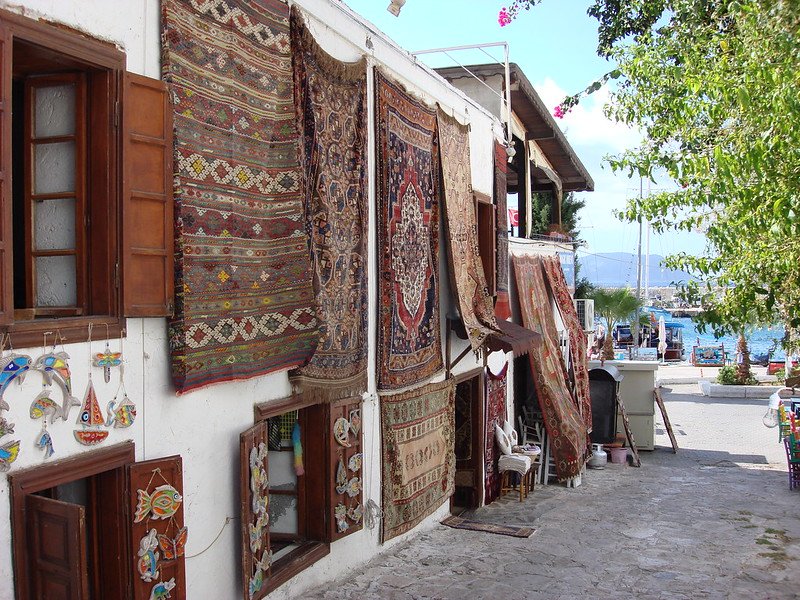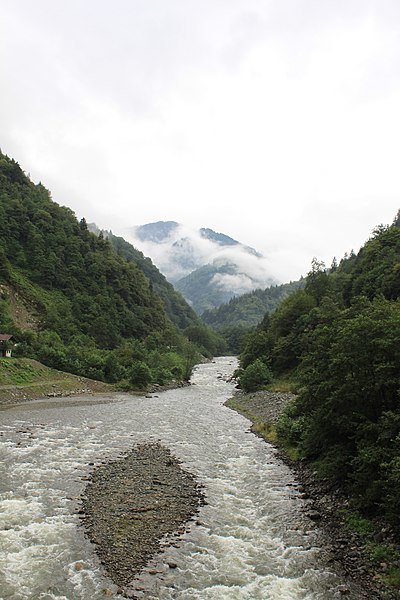Step off the beaten path and discover these six small towns in Turkey brimming with artifacts, natural wonders and rich history.
The beachtown of Kaş. Tutky Çetinel. CC BY 3.0.
One of the most renowned and well traveled cities in the world, Istanbul, peaked at 16 million tourists last year. The mosque- and artifact-riddled city attracts crowds that make it, for lack of a better word, a travel destination. Yet, some of Turkey’s most beautiful landscapes, edifices and history lie outside of its metropolis. Trek off the beaten path and journey to these six small towns in rural Turkey.
1. Safranbolu
Overview of Safranbolu. Ray Swi-hymn. CC BY-SA 2.0.
Once a trading center, this historic town is now home to many artifacts scattered throughout its ~390,000 square miles and among its three historical districts: Cukur, Kirankoy and Baglar. Some of its characteristic antiquities found in the Old Town include tombs, baths, mosques, fountains, and houses. Dive further into exploration with Safronbolu’s Old Mosque, the Old Bath, and the Suleyman Pasha Medrese, an Islamic religious institution, built in the 14th century. This UNESCO World Heritage site is worth discovering.
2. Kas
Rugs on a building in Kas. Julian Mason. CC BY 2.0.
This delightful beach town in Turkey’s Antalya Province doesn’t resemble the tourist-filled streets of the region’s eponymous city. Kas’s pleasant turquoise waters and lively color make the town stand out from Antalya’s busy, fast-paced life. While outdoor activities abound in this town — for example, canyoning is open to all travelers and day-long outdoor attractions like the Xanthos and Patara antique cities — a vibrant nightlife along the beautiful beaches awaits all visitors. Jazz clubs and rock bars alike welcome you to the wondrous city of Kas.
3. Iskilip
Rock tombs of Iskilip. Aerdemsenturk. CC BY-SA 4.0.
Just a 3-hour drive away from Ankara, Iskilip is another UNESCO heritage site on our list. This castle town’s epicenter is the Iskilip Castle, bordered by the town’s verdant mountains. While the Iskilip Castle is itself a site of historical importance, its base contains many Roman era tombs that are the real draw for many visitors. Iskilip is also a town of craftsmen; copper smiths, basket weavers, blacksmiths, cobblers, wood carvers and more set up shop in between houses, in houses, and everywhere in the town.
4. Midyat
Mor Sarbel Church. Senol Demir. CC BY 2.0.
In between the narrow cobblestone streets of Midyat lie ~410,000 square miles of artifacts, a structural chronicle of the past. The town, an hour drive from the Mardin province, houses unique sand-colored buildings. Among them is a series of religious edifices like the Ulu Cami, or mosque, with its characteristic minaret that towers over the surrounding buildings, the Mor Barsarmo Kilise, a church, and the Syrian-Orthodox Mor Sarbel church. Perhaps interesting, however, is Matiate, the official name of Midyat’s underground sites. Matiate is the largest cave system in the world, and is worth exploring along with the other wonders of Midyat.
5. Amasya
Houses in Amasya. Cobija. CC BY-SA 4.0.
This small town, much like others in this list, is a site of historical gravity. Three historical structures frame and define Amasya. First, the Amasya Castle, located at the top of Mount Harsena, is the center of this riverside city. While the climb to reach the castle can be steep, the view of Amasya’s green river and quaint houses has no peers. Second, the Amasya Museum is home to 24,000 artifacts from Anatolia including great stoneworks credited to the Hittites, Romans, Byzantines and Ottomans. Lastly, the Pontic Kings’ Rock Tombs, sepulchers carved into limestone rock formations, remind visitors of the once great Hellenistic Kingdom of Pontus, a stalwart enemy of Rome.
6. Camlihemsin
A river in Camlihemsin. Serra Kiziltas. CC BY-SA 4.0.
Located near the Black Sea region of Turkey, Camlihemsin is the smallest of the towns listed here, with an area of ~340,000 square miles. Much of the appeal of this town is its flora and fauna: with stately trees and grass-covered mountains, the town is perfect for hiking and mountain climbing. Hilltops embraced by surrounding clouds beautify the landscape. Waterfalls such as the Palovit Selalesi, a frequent reward for long hikes, also grace the town. Of course, one particular large historical artifact — the Zilkale medieval castle located in Fırtına Valley — caters to nature-naysayers.
Su Ertekin-Taner
Su is a first year student at Columbia University majoring in creative writing. Her love for the power of words and her connection to her Turkish roots spills into her satire, flash fiction, and journalistic pieces among other genres. Su hopes to continue writing fearless journalism, untold stories, and prose inspired by her surroundings.











